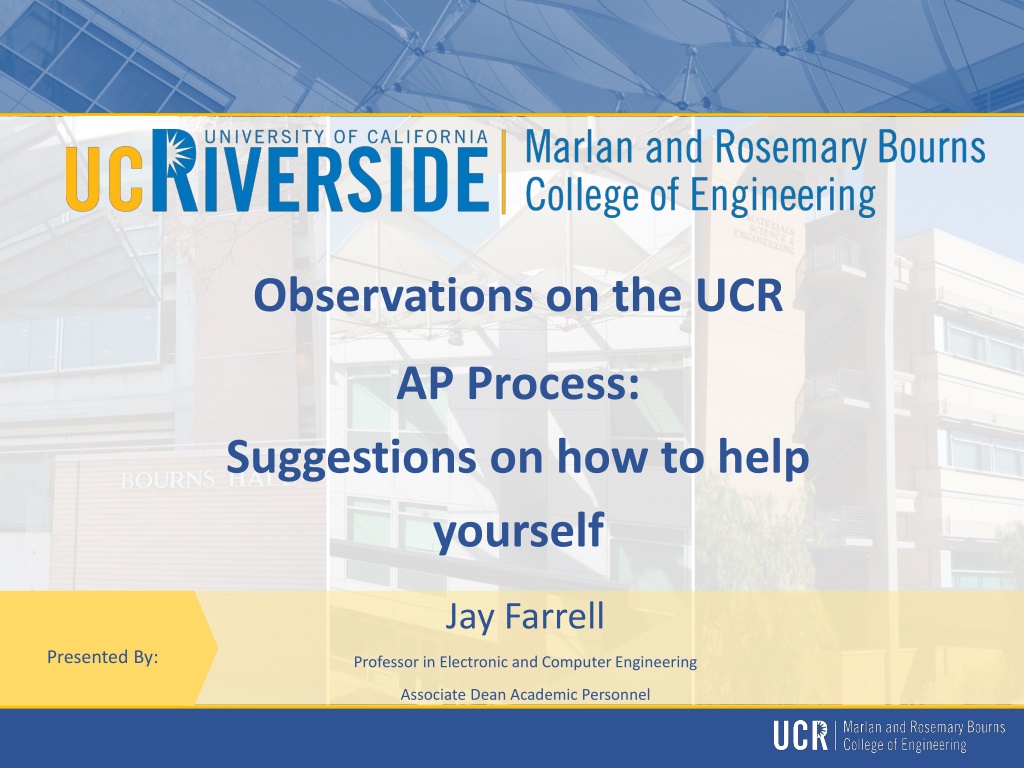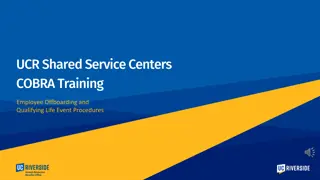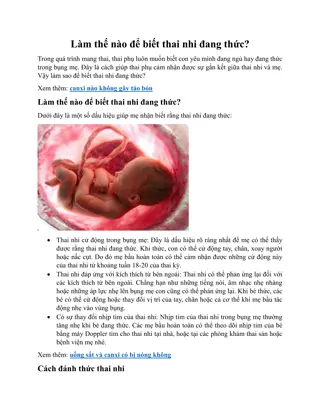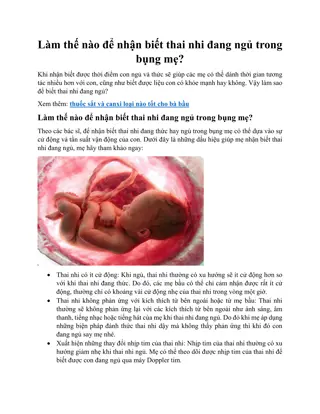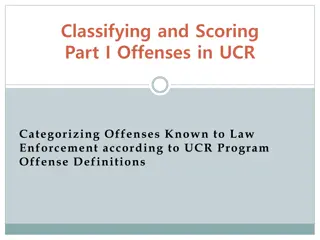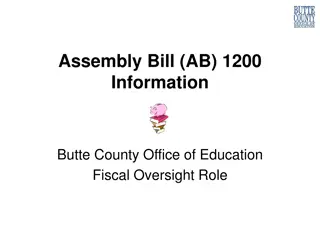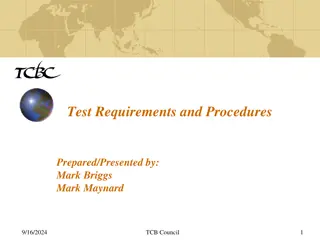Understanding the UCR AP Process and Improving BCOE Procedures
This content outlines the UCR AP process, faculty roles, and suggestions for enhancing the BCOE AP processes. It delves into research publication strategies, research funding criteria, and recommendations for self-evaluation and improvement in academic processes.
Download Presentation

Please find below an Image/Link to download the presentation.
The content on the website is provided AS IS for your information and personal use only. It may not be sold, licensed, or shared on other websites without obtaining consent from the author. Download presentation by click this link. If you encounter any issues during the download, it is possible that the publisher has removed the file from their server.
E N D
Presentation Transcript
Observations on the UCR AP Process: Suggestions on how to help yourself Jay Farrell Presented By: Professor in Electronic and Computer Engineering Associate Dean Academic Personnel
UCR AP Process: BCOE Faculty 1. Faculty prepares file (working with BCOE CPSU staff for clarity and consistency of info) 2. Departmental file review - May include: a. MSE Review b. Ad-hoc c. Department Meeting d. Department Letter: Iteration between Chair, ad-hoc, faculty (and CPSU) 3. College file review: a. Dean and AD-AP read, review, and discuss file b. Dean decides on recommendation and content of letter c. AD-AP drafts letter and iterates with Dean (and CPSU). Dean finalizes. 4. CAP Review 5. VC-AP Review 6. EVCP Review and Decision CPSU Cecilia Gonzalez: Director Angelique Butler: CSE, ME Maria Good: BIEN, CECERT, MSE Tiffany Lindsey: CEE, ECE
BCOE Role of AD-AP Oversee & Improve BCOE AP Processes Conflict Resolution Faculty Onboarding Faculty Development Review Search Facilitating Faculty Award Nominations Advise and assist with AP matters: Campus: EVCP, VC-AP, CAP Chairs CPSU Departments and Programs Dean Other duties as assigned: Represent BCOE . Suggestions for improving BCOE AP processes are appreciated
Suggestions: Research Publications - Use the comment field to help yourself by providing context: Identify co-authors who are your PhD students or post-docs With multiple senior authors, which are the leaders of the research State if the results were funded by one of your grants Instead of generic statements (i.e., all authors contributed equally) be specific ( i.e., This research required expertise in A and B. Author 1 provided expertise A and I provided expertise B. Funding: Comments: Funding breakdown: This should make sense. If not explain. Identify co-PI s and PI (if not you) State role/contribution
Research Funding: The Call The Call (p. 10, Section II.A.5): Research and scholarship must be performed at the highest level. In many areas, extramural support is essential for a high quality research program and while it is understood that grant activity cannot be the sole criterion for advancement, it may be used as a gauge of sustainability of the research program as well as another measure of peer review. The absence of extramural funding, however, shall not be taken as a negative indicator of the quality of research. When appropriate, the candidate and department are advised to address the issue of funding in the self-statement and department letter.
Research Funding: The Call Not the sole criteria: Dollars are Input. Papers and students are examples of Output. Input without Output is non-productive. Sustainability: Funding is typically essential in engineering to sustain a high quality research program: computers, experiments, students, travel, publications in top venues, . For Sustainability, all dollars are green, source is irrelevant Peer review/recognition: Different sources bestow different levels of recognition depending on review process and level of competition. Describe process for those that are appropriate Absence is not a negative indicator: Output without Input is not a problem from the AP review perspective, but may not be sustainable if the department, college, or campus changes its resource distribution model.
Suggestions: Teaching APM 210-1.d(1) Teaching - Clearly demonstrated evidence of high quality in teaching is an essential criterion More than one kind of evidence shall accompany each review file. ... types of evidence of teaching effectiveness are: (a) opinions of other faculty members knowledgeable in the candidate s field, particularly if based on class visitations, .; (b) opinions of students; (c) opinions of graduates who have achieved notable professional success since leaving the University; (d) number and caliber of students guided in research by the candidate and of those attracted to the campus by the candidate s repute as a teacher; and (e) development of new and effective techniques of instruction, including techniques that meet the needs of students from groups that are underrepresented in the field of instruction. Do: Include more than one type of evidence Explain contributions to teaching that are in addition to classroom teaching, e.g.: Course/curriculum development, Mentoring: PhD, MS, UG Make clear how your teaching meets the BCOE requirements If you meet the requirements through a large use of relief and buyouts, then demonstrating excellence may be a challenge Explain any negatives in teaching evals Add comments to pull out highlights Do not opt out of Ieval (see next slide)
Criteria for appointment, promotion, and appraisal (selected text from APM 210-1.2(1)) Ieval is designed (and trusted) to provide anonymous and unbiased information for the items in blue. All cases for advancement and promotion normally will include: (a) evaluations and comments solicited from students for most, if not all, courses taught since the candidate s last review; (b) a quarter-by-quarter or semester-by-semester enumeration of the number and types of courses and tutorials taught since the candidate s last review; (c) their level; (d) their enrollments; (e) the percentage of students represented by student course evaluations for each course; (f) brief explanations for abnormal course loads; (g) identification of any new courses taught or of old courses when there was substantial reorganization of approach or content; (h) notice of any awards or formal mentions for distinguished teaching; (i) when the faculty member under review wishes, a self- evaluation of his or her teaching; and (j) evaluation by other faculty members of teaching effectiveness. When any of the information specified in this paragraph is not provided, the department chair will include an explanation for that omission in the candidate s dossier. If such information is not included with the letter of recommendation and its absence is not adequately accounted for,
Suggestions: Service High quality academic and professional service is required from all faculty. Quantity of service and leadership is expected to increase as faculty rise through the ranks and steps. In the File: Comments should help the outside evaluator identify and understand major items State time commitment or workload Describe major activities Outcomes Comments are not needed for all items, just main items (high workload or time commitment) In the Faculty Discussion and Department Letter: Carefully select adjectives ensuring that they are appropriate. Department credibility. Support adjectives Service is excellent is a weak statement unless supported with facts Provide evidence appropriate to the Rank/Step in the form of Time commitment or workload Outcomes of the service
Suggestions: Self-statements Put your file in context: Help people (other than you) to understand the most important items in your file. Do: Provide context. Examples: Research: What are your key results this period and how were you essential to their production? Why do you publish where you do: Quality and Appropriateness? What is the review process for conferences that you consider as important as journals? What are the important metrics in your field (e.g., citations, acceptance rates, )? Teaching: If anything is negative or non-standard, explain. Service: Point out the contribution of the important items here or in comments. Do not: Include lists of information that is already in your file (e.g., publications or funding).
Discussion Thank you for inviting me.
Normal Uc Merit and Promotions Actions Assistant Associate Full Normative Time 2 2 2 2 2 2 Normative Time Normative Time Step Step Step Definitions: Acceleration: Progression to the next Rank or Step before the normative time Action: either a merit or promotion. Normal merit advance: Progression to the next Step in the same rank at the normative time Promotion: Progression to the next Rank Rank: Assistant, Associate, Full I II III IV V VI I 2 2 2 3 3 II III IV V I 3 3 3 3 II III IV V VI VII VIII IX AS Notes: Actions that require extramural letters include: appointments, promotion to Associate Professor, promotion to full professor, advancement to Professor Step VI, and advancement to Professor Above Scale (AS). These are indicated in the figure by an action that crosses a wide black line. Parallel steps (e.g., Asst. V and Assc. I) have similar salaries. A faculty can choose to advance to either of the parallel steps from the step that precedes it. For example, a faculty at Assc. III might apply for advancement to Assc. IV or promotion to Prof. I.
